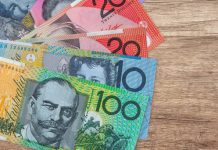Markets
After the Fed, the spotlights redirected to the Bank of England. The central bank voted in a 7-2 decision to raise rates by 75 bps to 3%. The two defectors voted either for a 50 bps or 25 bps move. Its new forecasts are not yet calibrated to the formal medium-term fiscal statement (due Nov 17) but do take into account all government announcements up to and including October 17, amongst others the shortened period of the Energy Price Guarantee (EPG) to six months. The projections are conditioned on market expectations (through Oct 25) that see the policy rate go to 5.25% next year. If that were to happen, the UK economy would be in a recession for almost two years, the unemployment rate would surge to 6.5% and CPI, after peaking at 11% in Q4 this year (lower than projected in August thanks to the EPG), would drop to 1.5% in 2024 and 0% the year thereafter. In the alternative scenario of policy rates steadying at the current 3% rate, economic activity would be stronger but would still be falling at the end of 2023. CPI inflation is then projected to be a little above the target at the end of 2024 before falling more than a percentage point below the target in 2025. In the latter scenario, some more tightening is necessary while the former shows the BoE thinks markets were getting ahead of themselves. In unusually explicit wording, the policy statement says that further increases in Bank Rate may be required for a sustainable return of inflation to target, albeit to a peak lower than priced into financial markets. Governor Bailey repeated that later during the press conference, citing even “current” market pricing of 4.75%. UK money markets don’t buy Bailey’s guidance though and stick to a terminal rate between 4.5-4.75%. UK yields drop 3.5 bps at the front. The 10y yield rises 6.7 bps and the 30y even jumped >20 bps before cutting gains in half currently. Sterling loses out. The timing of the BoE’s dovish hike of course unfortunate, one day after uberhawk Powell. Dire growth prospects obviously don’t help sterling either. EUR/GBP advances from 0.86 to a test of the 0.872 resistance level. Cable (GBP/USD) drops from 1.1422 to 1.118.
Moves on other markets are still inspired by Powell. European stocks lose a percent while bourses in the US fall up to 1.2% (Nasdaq). Core bond yields add several more bps with Germany slightly underperforming the US. German yield changes vary between +7 bps (2y) to +9.1 bps (10y). Europe’s 2y swap yield is back at testing the 3% barrier. US yields add another 7.5 bps at the front (2y new cycle high) with more modest gains further out (1.9/4.8 bps 30y/10y). King dollar is unleashed. EUR/USD (0.977) risks losing its recently created upward trend channel already. The trade-weighted DXY steams higher to 112.9. The Japanese yen is surprisingly resilient.
In more central bank news today, the Czech National Bank kept rates steady at 7%. The move was expected. The CNB also decided that it will continue to prevent excessive fluctuations of the koruna exchange rate. This seemed to have squeezed out some who thought otherwise with EUR/CZK abruptly easing to 24.46 shortly after the announcement. A press conference is due later today. The Norges Bank lifted rates by a smaller-than-expected 25 bps move today. The policy rate now stands at 2.5%. In a very short policy statement, the NB pitted higher-than-expected inflation (6.9% in September) and a tight labour market against some areas in the economy cooling down and easing energy prices that may curb inflation ahead. Further tightening in December is likely though policy rate setting will be more gradual. The Norwegian krone loses in a kneejerk reaction. EUR/NOK headed to 10.33
News Headlines
Turkish inflation shows no signs of abating whatsoever. Prices went up by 3.54% m/m in October – another acceleration from the 3.08% the month before. Inflation soared from 83.45% to 85.51% y/y. Core inflation (ex food and energy) also accelerated from 68.09% to 70.45%. Of the main categories, transportation costs rose the most (117.2% y/y), followed by food and non-alcoholic beverages (99.1%). The October CPI reading is seen as the peak because of base effects kicking from this month on. With the central bank’s unorthodox policy – cutting rates despite skyrocketing inflation – real yields will remain deeply negative for a considerable amount of time still. The CBRT is expected to lower the policy rate (now 10.5%) one more time at the next meeting, to bring it into single-digit territory. The Turkish lira marginally strengthened following the release, which was slightly below analyst estimates overall. EUR/TRY is trading around 18.19.













